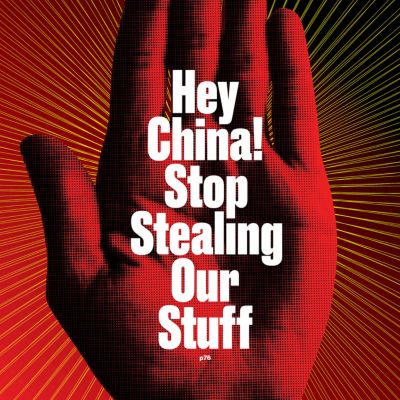HP’s Pipe Dream: Clones, Theft, and the Harsh Reality of Selling Print in China
While HP paints a rosy picture of its “glocal” ambitions in China, insiders in the global print industry know better: China isn’t HP’s promised land — it’s the graveyard of its intellectual property. In the China Daily article (see below), HP executives laud their partnership with Chinese factories and wax poetic about reshaping the “future of printing” through innovation. But behind the corporate optimism lies a brutal truth: HP’s biggest competitor in China isn’t another brand — it’s the countless underground clone factories that steal HP’s technology every single day, with near impunity.

HP’s Technology Has Already Been Stolen — and Mass-Produced
Let’s not mince words. Much of the printer hardware and cartridge technology HP is trying to sell in China has already been reverse-engineered, copied, and mass-manufactured — often by former partners, ex-employees, or suppliers who know the architecture down to the chip level.
Clone toner and ink manufacturers in Zhuhai and the Pearl River Delta operate like organized tech laundromats — taking proprietary designs, tweaking just enough to skirt loose enforcement, and flooding the market with fakes that look, install, and perform just like the real thing. These aren’t cheap knockoffs — they’re precision-engineered clones built to cannibalize HP’s profits. The worst part? Chinese consumers often don’t know — or don’t care.
IP Theft is Not a Glitch — It’s a Business Model
HP has taken clone makers to court in both China and the West, but enforcement in China remains, at best, symbolic. For every factory raided, two more spring up under a different name. It’s a whack-a-mole game that HP has been losing for over a decade.
And while HP pushes firmware updates to “lock out” cloned cartridges, clone makers have entire engineering teams dedicated to hacking those protections — sometimes releasing bypass chips within days of an HP firmware update. When your R&D gets outpaced by copycats in real-time, it’s not a competitive market — it’s an IP warzone.
Why Would Chinese Buyers Pay More for the Real Thing?
Even if HP could somehow shut down the clones (it can’t), it still faces an impossible sell. Why would an average Chinese office buyer pay full price for an original HP toner cartridge, when a local brand — or a nearly-identical clone — offers 90% of the performance at 30% of the cost. HP’s premium strategy assumes brand loyalty. But in China’s print consumables market, brand is often irrelevant. Price and availability rule — and clones dominate both.
Corporate Naïveté or Deliberate Spin?
Let’s call HP’s China strategy what it really is: corporate spin. The idea that HP can “reshape” China’s printing future by expanding local manufacturing and “integrating AI” is, at best, wishful thinking. At worst, it’s a distraction from the real issue: HP has lost control of its consumables business in China — and it doesn’t know how to get it back. If HP wants to survive in China’s print market, it needs more than partnerships and press releases. It needs scorched-earth IP enforcement, real-time authentication systems, and pricing models that acknowledge the reality of clone domination.
Otherwise, it’s not just a hard sell — it’s a fool’s errand.
HP executives can hold ribbon-cutting ceremonies and talk about “reshaping the future” all they want. But until they’re ready to confront the clone toner economy head-on — not just with lawsuits, but with fundamental business model shifts — they’re not reshaping anything. They’re just reprinting the same failed strategy, one glossy press release at a time.